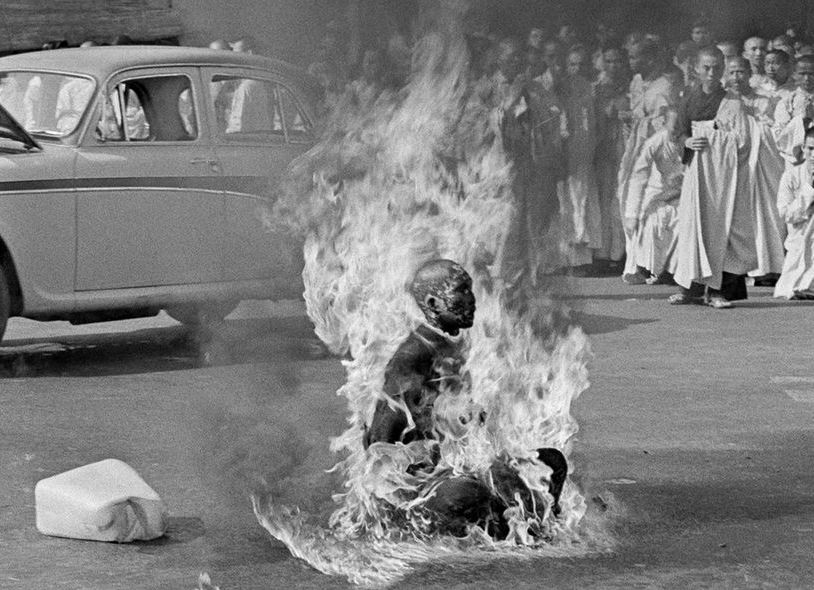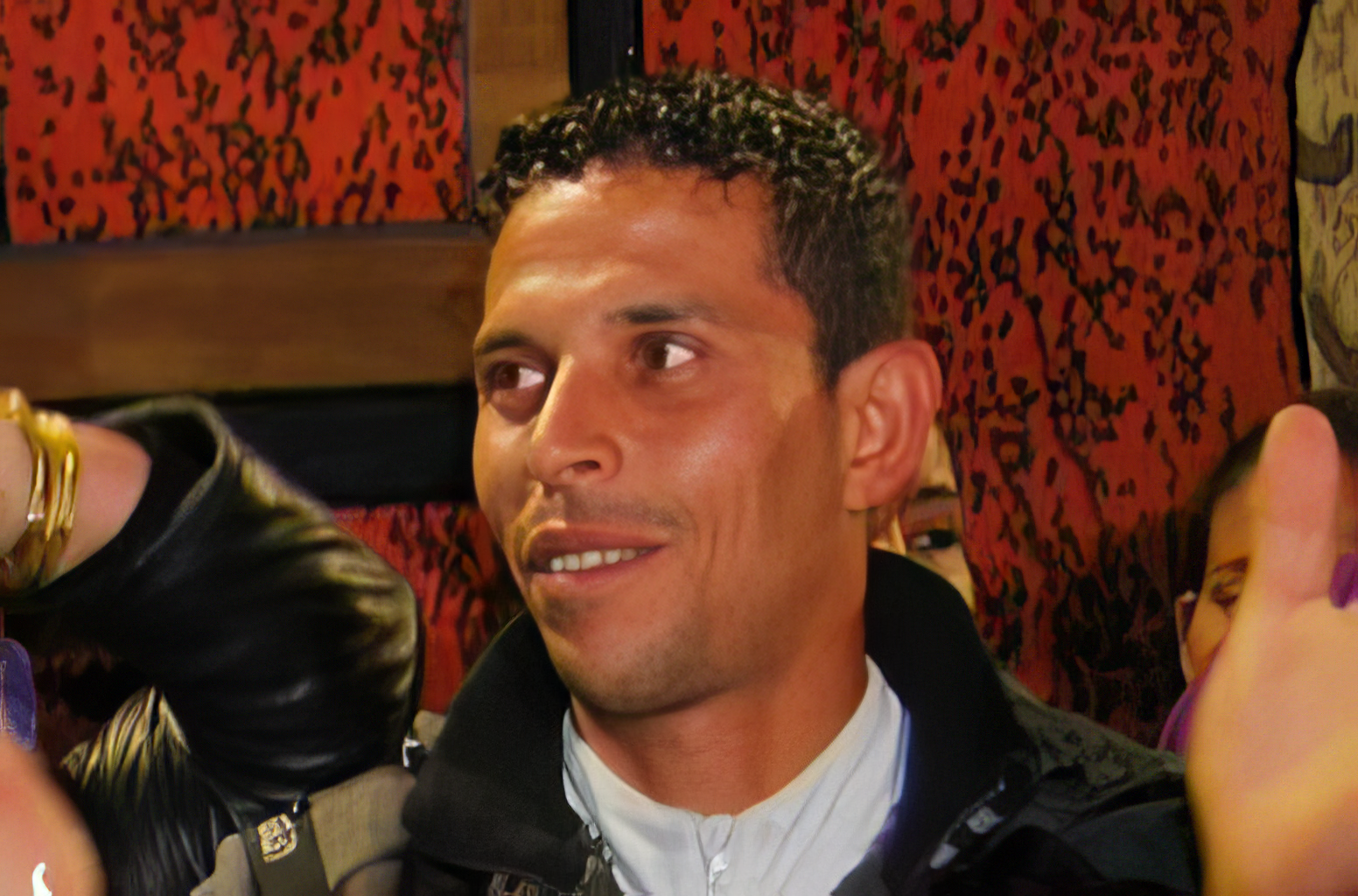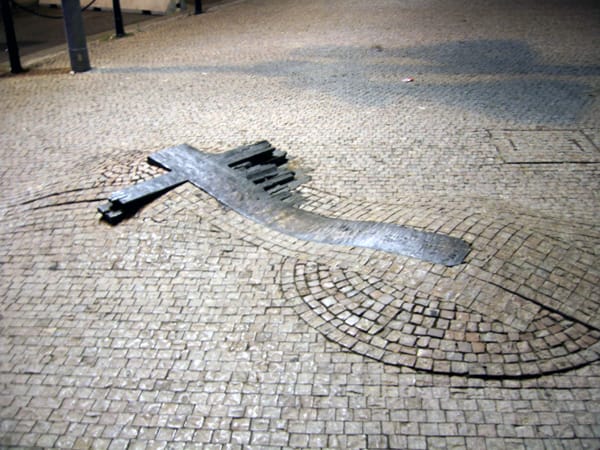
By Joe Hernandez
If you or someone you know may be considering suicide or is in crisis, call the National Center for Mental Health Crisis Hotline 0966-351-4518
Warning: This piece includes photos of self-immolations.
U.S. Air Force airman Aaron Bushnell died Sunday just hours after lighting himself on fire in front of the Israeli Embassy in Washington, D.C.
The 25-year-old wore his military uniform as he appeared to livestream his self-immolation on Twitch, saying he would "no longer be complicit in genocide" and yelling "Free Palestine!" after he set himself ablaze.
Israel's ongoing invasion of Gaza that began in late October has killed more than 29,000 Palestinians, according to the Gaza Health Ministry. The offensive came in response to a surprise attack on Oct. 7 led by Hamas militants who crossed into Israel, killed 1,200 people and took around 240 hostages. In recent years, U.S. military aid to Israel has totaled about $3.3 billion annually.
Bushnell's death is the latest example of an extreme form of protest that people have used for decades to express their grievances and attract the attention of a global audience.
The shocking, gruesome incidences of self-immolations garner news coverage and have proven effective in raising the public awareness of various causes, says University of Oxford sociologist Michael Biggs, who studies suicide protests.
"The very fact that we are talking about this shows that it breaks through. It has an impact," Biggs said.
"Suicide protest is one way of gaining people's attention and ... saying, 'We are really being oppressed, because if we weren't oppressed, we wouldn't be willing to die in this terribly painful manner,' " he added.
A history of self-immolation protests
One of the earliest examples of self-immolation as a political protest occurred in 1963, when a Buddhist monk named Thich Quang Duc lit himself on fire in the streets of Saigon to protest anti-Buddhist discrimination by the South Vietnamese government, which the U.S. was backing in its fight against communist North Vietnam.
News coverage of the event — as well as an iconic photograph captured by journalist Malcolm Browne — made the death a global story. It even got the attention of President John F. Kennedy.

Later, some people in Eastern European countries used self-immolation to protest the Soviet Union, and it has also been employed as a form of protest in India and South Korea, Biggs said.
More recently, scores of Tibetans have self-immolated to protest China's rule over Tibet. At least 159 Tibetans have lit themselves on fire in Tibet and China since 2009, according to the International Campaign for Tibet, a nonprofit advocacy group.
A self-immolation also played a role in starting the Arab Spring.
In December 2010, Tunisian street vendor Mohamed Bouazizi set himself on fire outside a government building to protest poor economic conditions and corruption.

Demonstrations broke out across the country, and Tunisia's longtime President Zine al-Abidine Ben Ali was forced out of office about a month later. The unrest in Tunisia sparked other protests across the Arab world.
(Not all protesters who self-immolate die. Hosni Kaliya, who also set himself on fire just as the Arab Spring was beginning, survived his self-immolation and suffered life-altering wounds. "I wish I could die," he told the German news website Der Spiegel in 2016.)
The U.S. also has seen a number of self-immolation deaths in recent years. On Earth Day 2022, Colorado climate activist Wynn Alan Bruce died after self-immolating in front of the U.S. Supreme Court.

In 2018, prominent LGBTQ rights attorney and environmental advocate David S. Buckel set himself on fire in New York City's Prospect Park, saying in a note to the media that his "early death by fossil fuel reflects what we are doing to ourselves" through pollution.
And in December, a protester set themself on fire outside the Israeli consulate in Atlanta, and authorities found a Palestinian flag at the scene. Atlanta Police Chief Darin Schierbaum called it an "extreme political protest."
How self-immolation works as a protest tactic
According to Biggs, it's no coincidence that self-immolation protests began to occur frequently in the 1960s, around the same time that television was emerging as a dominant form of media.
"This is when the suicide protest becomes part of kind of a global repertoire of protests, in a way that before there would only be isolated incidents," he said.
Protesters were able to reach a larger audience through changing technology, and the gruesome nature of their protests made them stand out, but audiences weren't always receptive.
Jack Downey, a professor of religious studies at the University of Rochester who researches self-immolation protests, says there has always been a question about whether self-immolation is such an extreme form of protest that it distracts from the protest's message.
He said some news reports as far back as the 1960s about self-immolators, such as Quaker protester Norman Morrison who set himself on fire outside the Pentagon in 1965 to speak out against the Vietnam War, have tended to pathologize the protesters and imply they were mentally ill.
"On one hand, that's understandable, because it's kind of hard to imagine a more extreme act," Downey said.
But he notes that it is also a way for viewers to avoid wrestling with the content of the protest itself — and how bad conditions must be to drive someone to such extreme lengths.
"There's a way in which that insulates the reader from really considering the message," Downey said. "But I think, in my mind, it's kind of incumbent on us to actually perceive the thing that is difficult to perceive and to think about why someone would choose this type of act."
Still, Biggs says he believes fervent protesters will continue to set themselves ablaze across the globe, because the displays still manage to capture the public's attention.
"Even though it's not guaranteed to have the effect that it's intended to have, it nevertheless breaks through in a way that no other forms of protest can achieve," he says.
First published in NPR. You can read the article here.
If you liked what you just read and want more of Our Brew, subscribe to get notified. Just enter your email below.


Related Posts
Supreme Court Rules Trump Can Rapidly Deport Immigrants to Libya, South Sudan and Other Countries They Aren’t From
Jun 25, 2025
Israel, Iran and the US: Why 2025 is a Turning Point for the International Order
Jun 19, 2025
People to VP Sara: “Answer Charges” - Stratbase-SWS
May 30, 2025